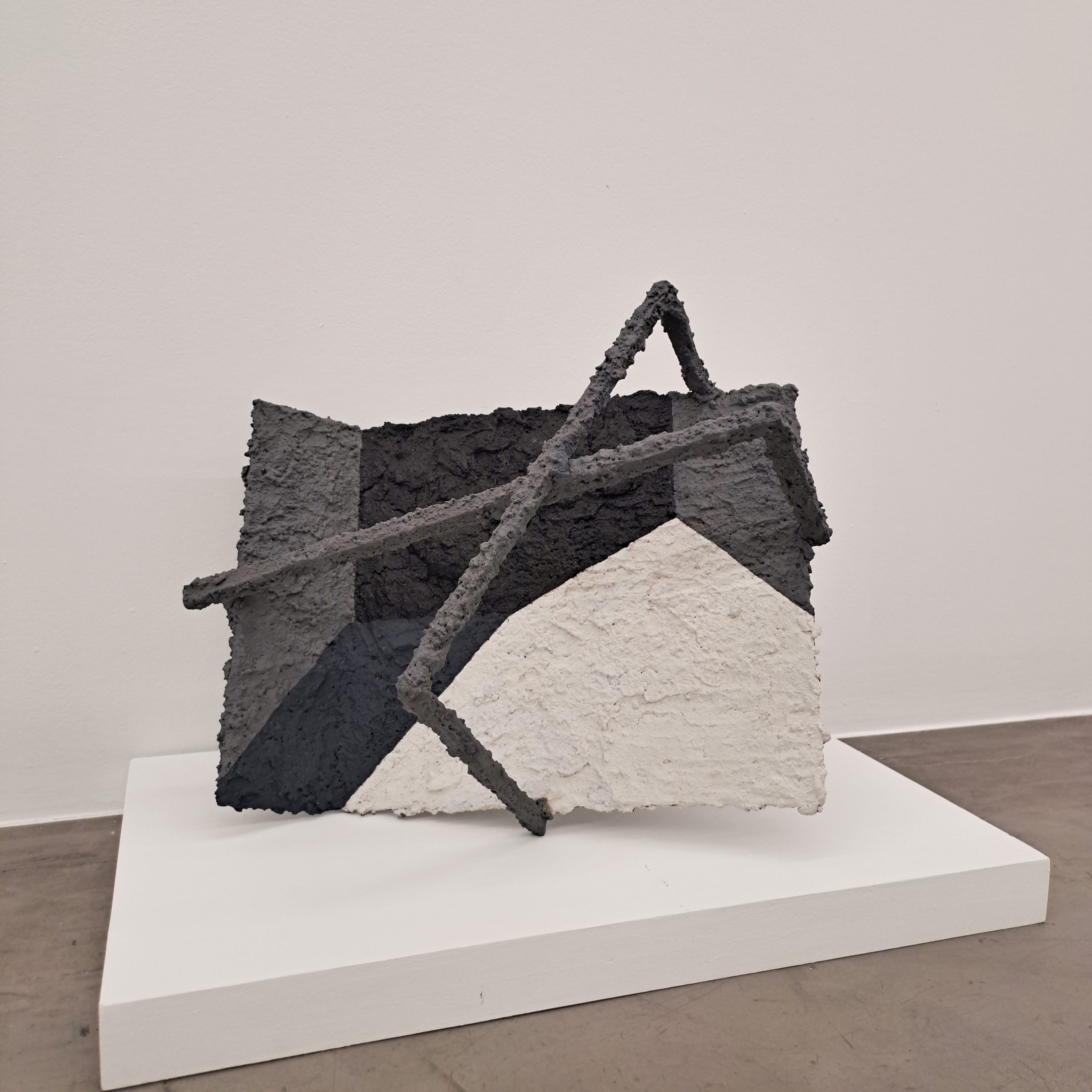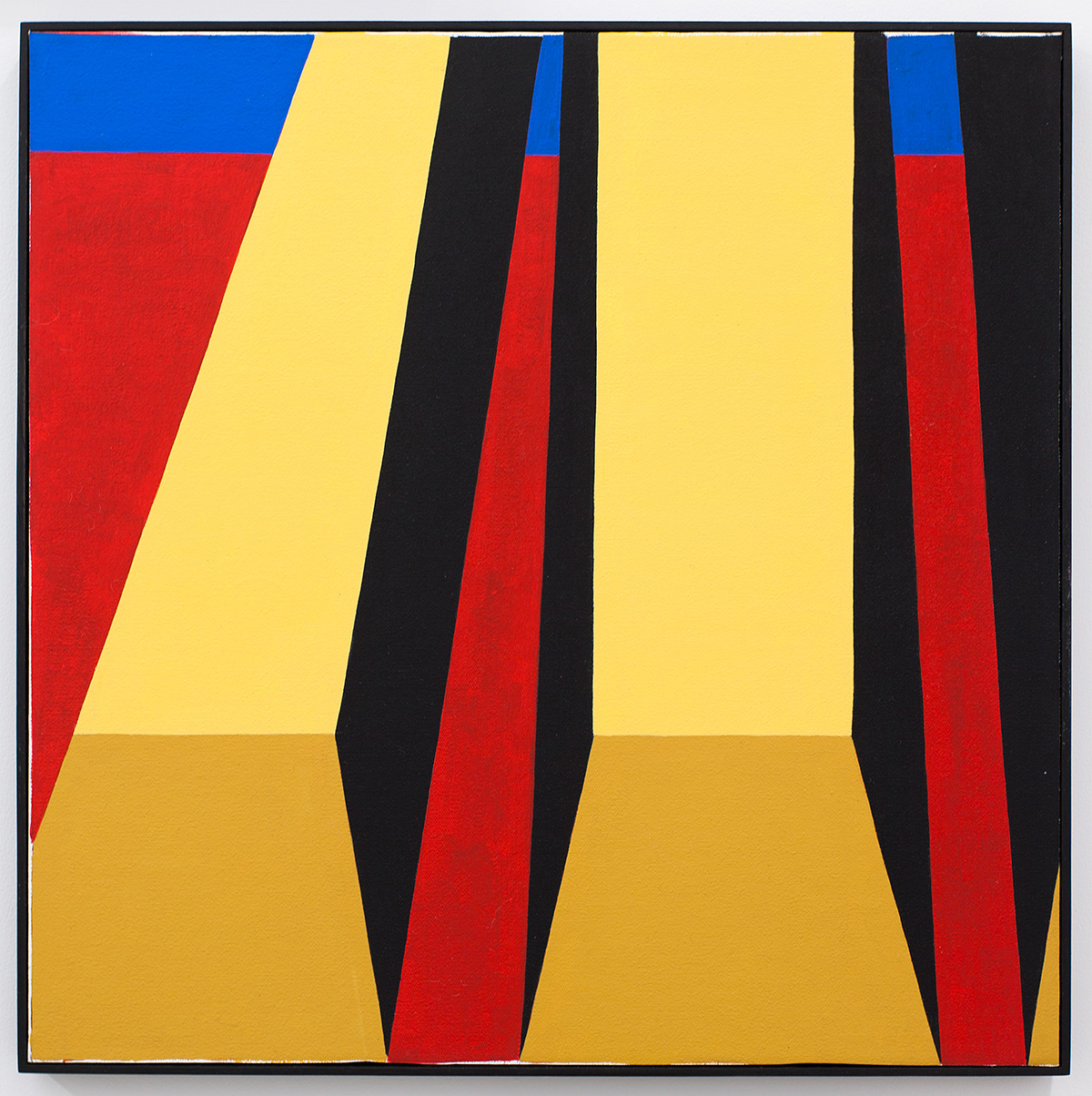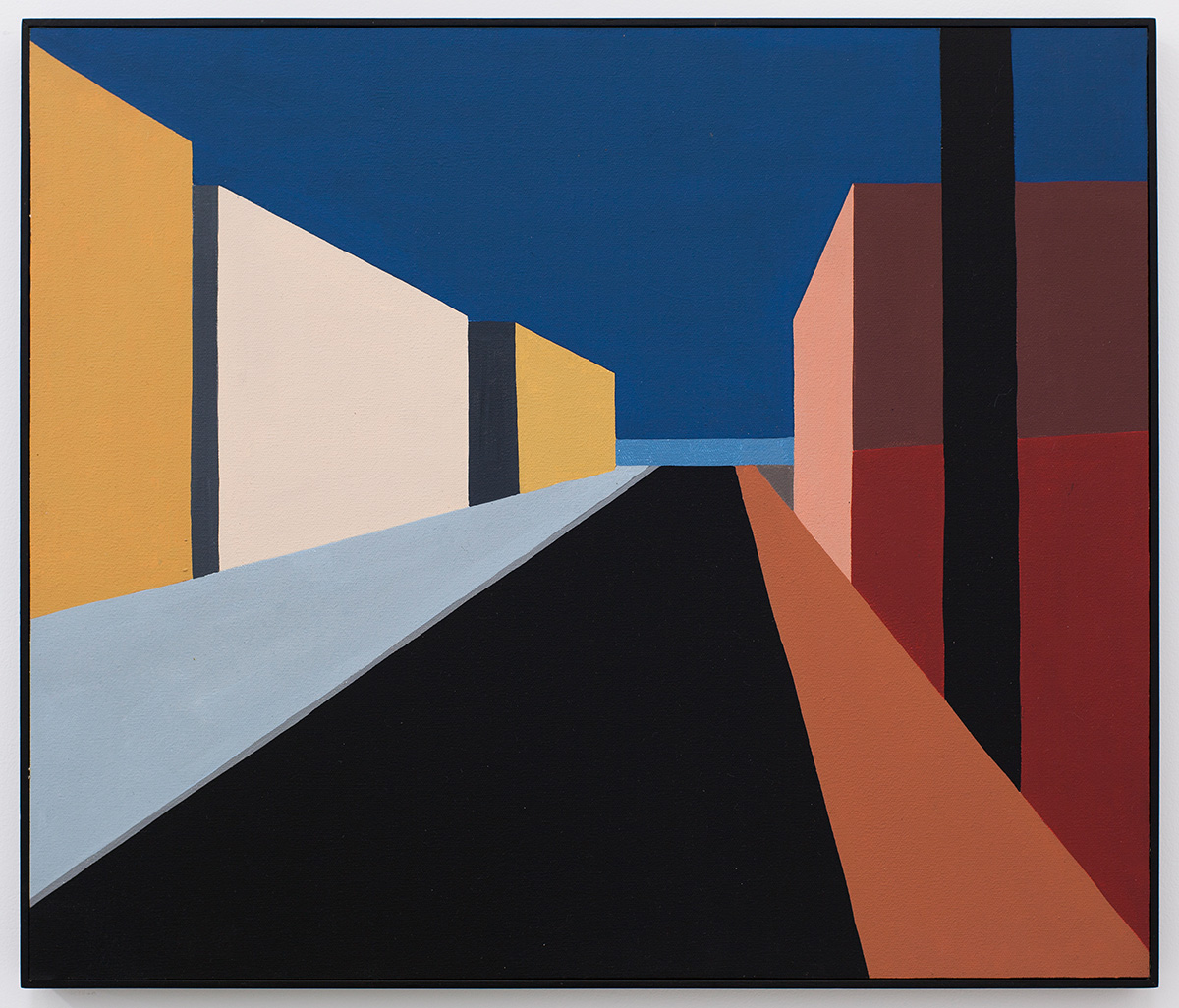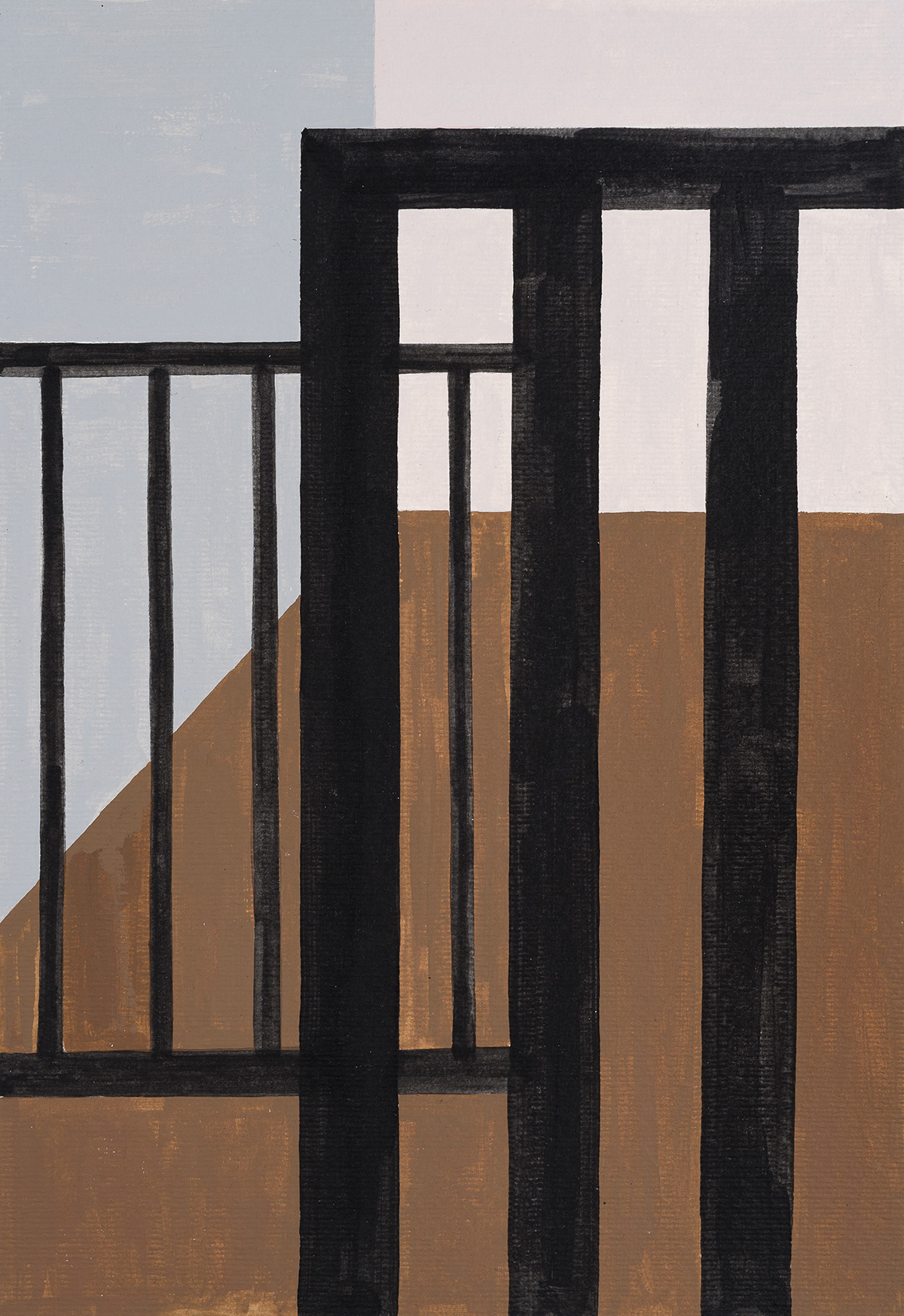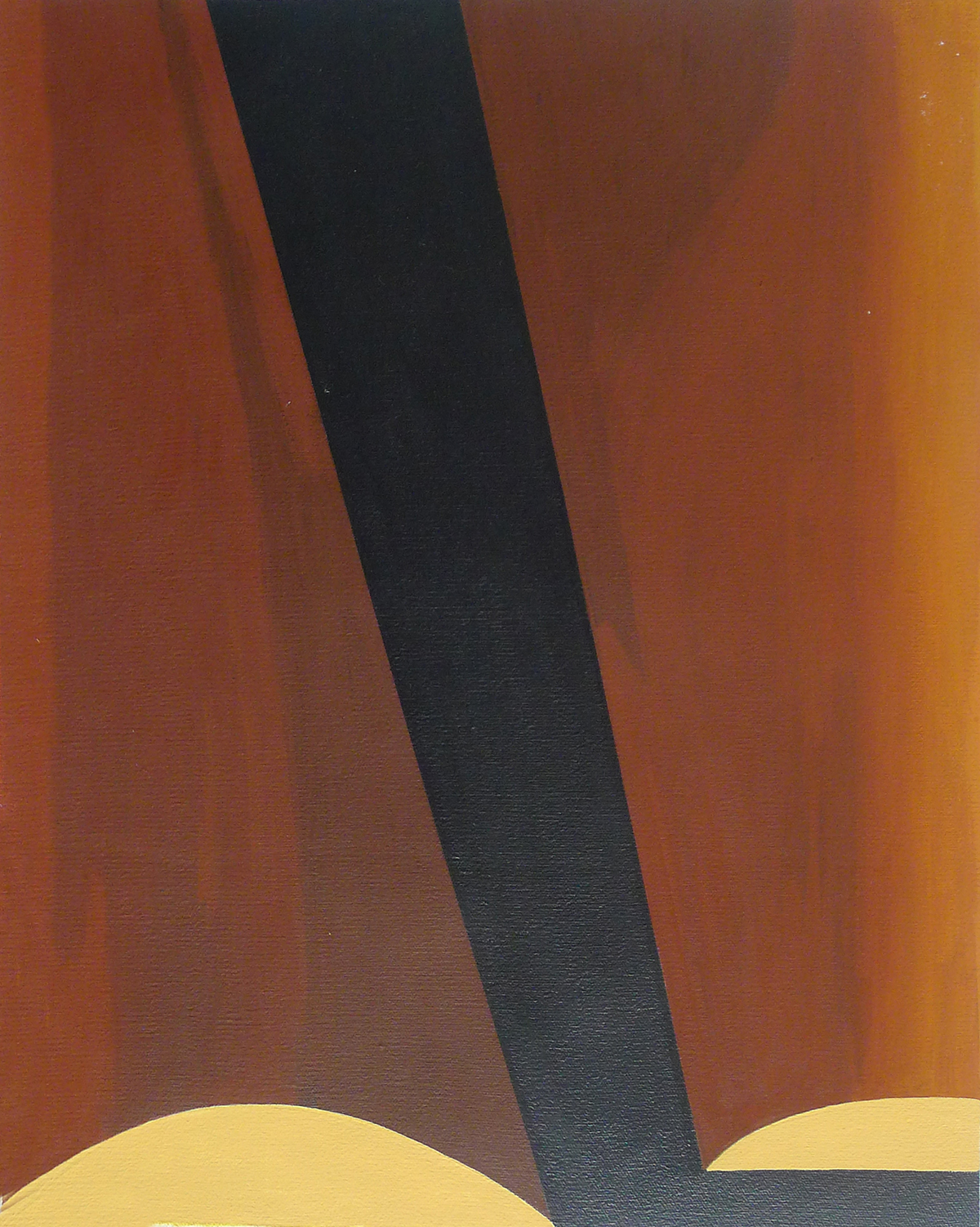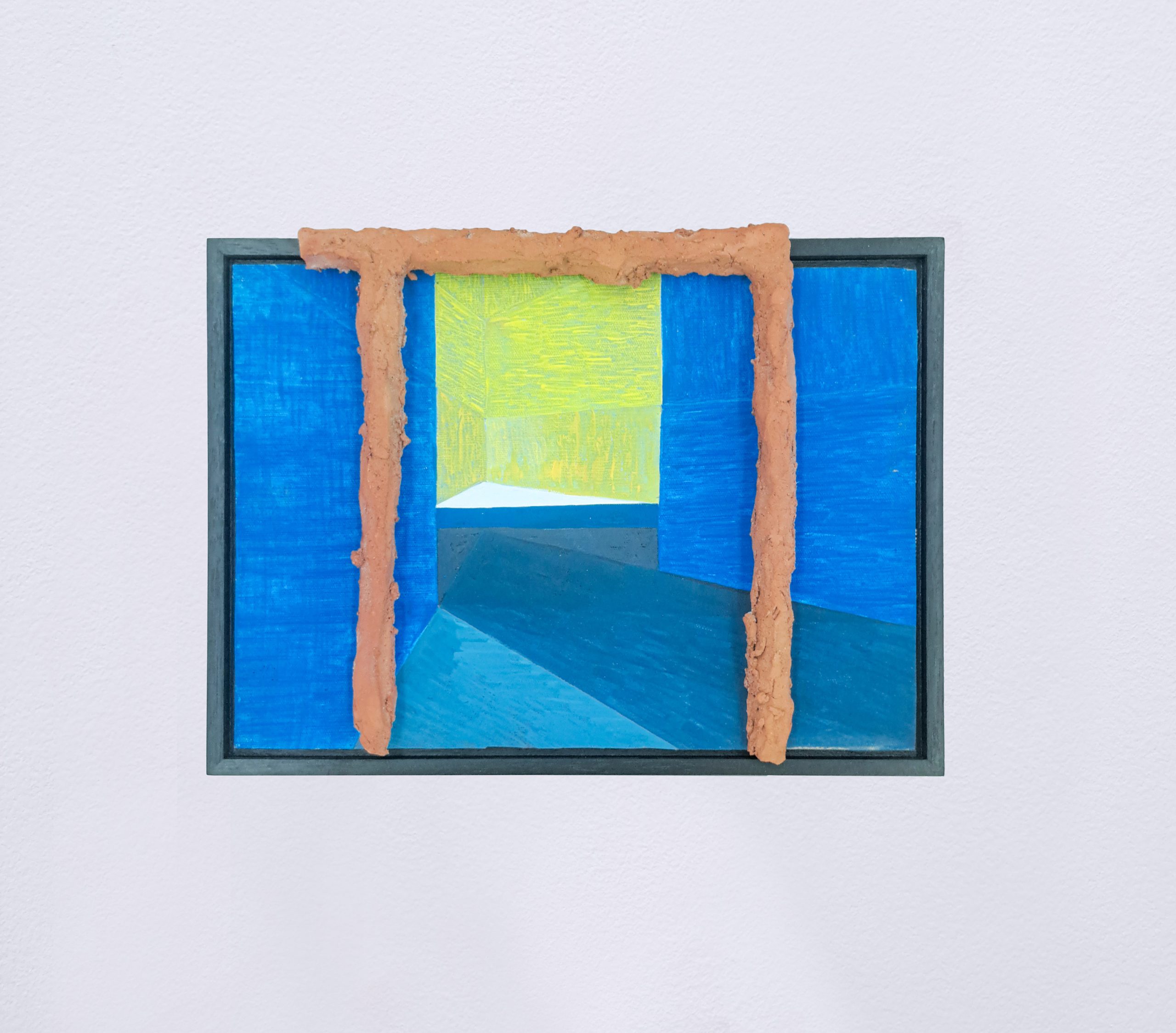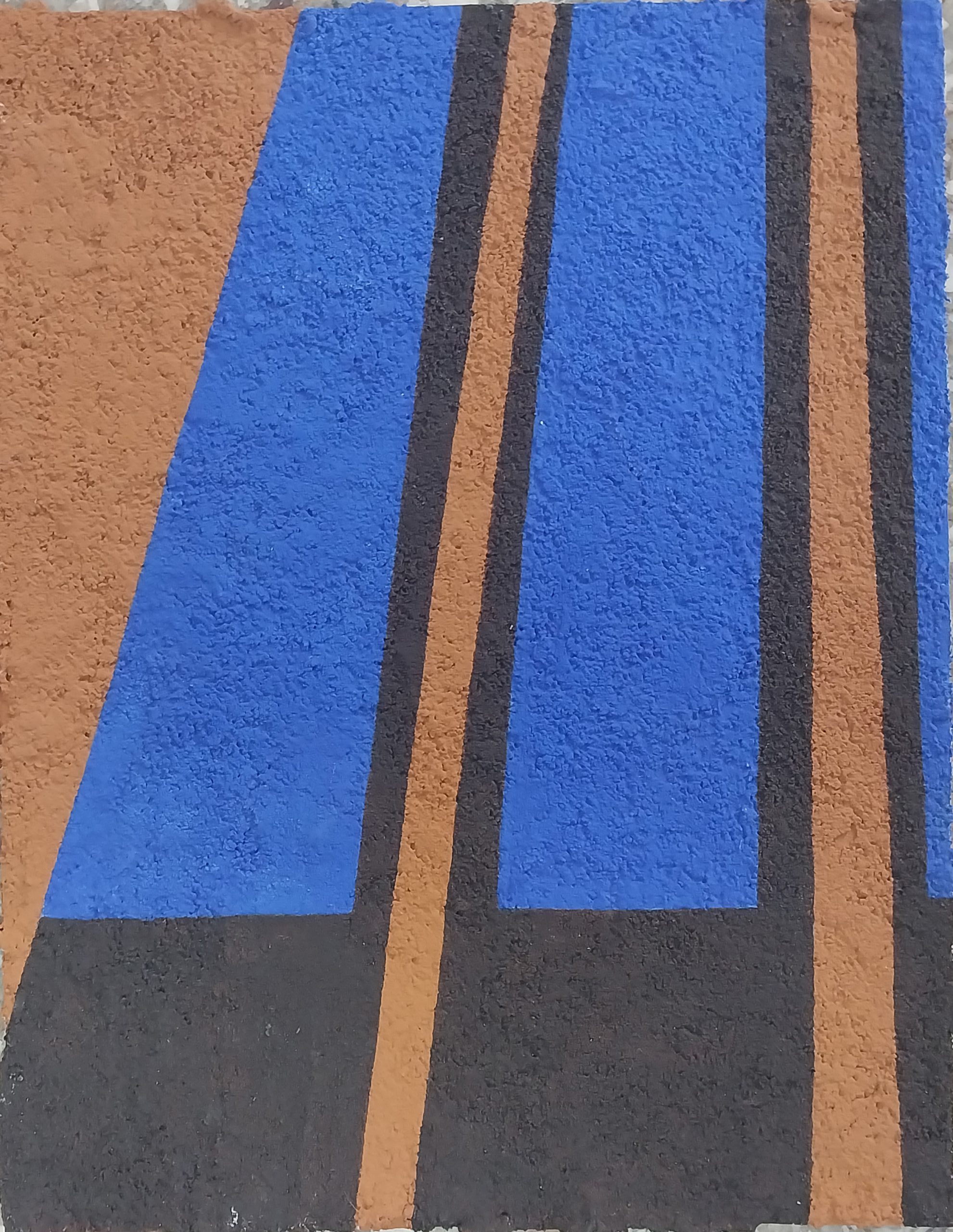LA VIDA ERRANTE
leila tschopp
TEXT BY NICOLÁS CUELLO
NOV 19. — FEB 28. 2025
exhibition view
Ph. Ignacio Iasparra
works
Untitled. Series Pintura inhumana, 2024
Leila Tschopp
Acrylic and sand on canvas
9.1 x 12.6 in
Untitled. Series Pintura inhumana, 2024
Leila Tschopp
Acrylic and sand on canvas
9.4 x 11 in
Untitled, 2022-2024
Leila Tschopp
Acrylic and silicon on foamed pvc and wooden structure
11.8 x 15 x 6.3 in
Untitled. Series La casa de fuego/La casa en llamas, 2021
Leila Tschopp
Acrylic on canvas
15.6 x 20.3 in
Untitled. Series La casa de fuego/La casa en llamas, 2021
Leila Tschopp
Acrylic on canvas
15.6 x 19.6 in
Untitled. Series La casa de fuego/La casa en llamas, 2021
Leila Tschopp
Acrylic on canvas
16.9 x 21.7 in
Untitled. Series La casa de fuego/La casa en llamas, 2021
Leila Tschopp
Acrylic on canvas
11.6 x 15.6 in
BACKROOM works
Untitled. Series Pintura inhumana, 2024
Leila Tschopp
Acrylic and sand on canvas
8.1 x 11 in
Untitled. Series Pintura inhumana, 2024
Leila Tschopp
Acrylic and sand on canvas
8.1 x 11 in
Untitled. Series Pintura inhumana, 2024
Leila Tschopp
Acrylic and sand on canvas
8.3 x 10.6 in
Untitled. Series Pintura inhumana, 2024
Leila Tschopp
Acrylic, sand and baked clay on canvas
7.9 x 11 in
Untitled. Series La casa de fuego/La casa en llamas, 2021
Leila Tschopp
Acrylic on canvas
11.6 x 15.6 in
TEXT
A Small Archive of Atmospheres and Moods
Text by Nicolás Cuello
Until now—right now—the question of the small in Leila Tschopp’s (Buenos Aires, 1978) art has not been grappled with. We are so accustomed to her sustained research into the spatiality of power in the form of complex installations that articulate uncomfortable connections between corporality, its movements, and visual language that we have not had the chance to get to know another facet of her work. Paradoxically, a great deal of Tschopp’s production is structured around, on, and through the potential of artwork when rendered in humble forms and tiny supports.
La vida errante, the artist’s third solo exhibition at HACHE, by no means understands the small format as a first and cursory approach to the problems at the core of her practice. On the contrary, itlays out a diagram that binds together over the course of her production all the works where the small takes on a life of its own, recognizing its latent singularity—that is, how it stands apart from the rest of her oeuvre. That singular strain in Tschopp’s art surfaces in a long series of works: fragile paintings on paper, imperfect shapes in clay, expressive textures in pigment, along with porous brushstrokes that briefly turn away from the principle of control that her better-known flat work explores. The small surfaces here are not written off as a sign of immaturity, but vindicated as legitimate expression of a body, as a possible form of existence for painting. What we have is the originality of an unplanned image and the ruggedness of forms received haphazardly rather than within the confines of a project.
These smaller paintings and objects run though the artist’s trajectory—indication of how important intuitive experimentation and the emergence of the vulnerable are for her work, to say nothing of quick association and the autonomous conduct of colors. A series of unlikely factors that condition her work as an artist enable heedful listening, a certain manifestation of magic, and calm acknowledgment of her primary poetic disquisition: the production of atmospheres and moods. A horizon for production and material impact on the body that, once revealed on the intimacy of surfaces exceptional within the context of her art, Tschopp decides to expand strategically in order to intensify the sense of totality.
Significantly, the constellation of small gestures that make up this exhibition compose scenes—in that, they are like her large-scale projects. In those scenes, the viewer is engaged time and again in the always-tense relationship between the body and surfaces, between matter and surroundings, as well as between spaces of coexistence and enclosure. Despite a new and gestural appearance—that is, the legible humanity part and parcel of a series of marks that seem to attest to a presence that, in her more well-known work[JB2] s, the artist denies—at play here as well is a set of relationships. These smaller works are no less interested than the rest of Tschopp’s production in stirring up thorny issues, jarring feelings, and invasive forms of affectations whose primary poetic operations include absence, subtraction, and suffocation.
While La vida errante affirms the artist’s persistent desire to explore the tensions between the body and the material expression of the spaces that give it meaning, it also, as exhibition, constructs a beyond in her work. The show turns time as matter into an architecture where it might be possible to investigate economies of orientation and disorientation as well as dynamics of presence and absence. Thus, the multiple stages, techniques, and thematic sequences that run though this disjointed account of her production eschew linear transparency as sole mechanism for reading in and around her sensibility. In its place, they turn to the gaps and repetitions, the discontinuities and estrangements, in her production to create a complex archive of the states and moods that permeate her work.
This archive is peculiar insofar as its wanderingness is not a menacing object but a sentient logic. Through the valorization of the small, it brings to light an alternative history of the artist’s processes, a muted chronicle of her vulnerability; painting casts aside the desire for control and faces the risk of its own power. At stake is a personal archive that encompasses the expression of what appears to be disorder to reveal in its sentimental organization a parallel structure, a reactive and tactile way into the artist’s history. Heeded here are the silent categories with which Leila Tschopp creates invisible paths that connect lines, geometric shapes, colors, and ghostly modes of the bodily. Those are what stammer out an erratic narrative of the complex sensations with which she attempts to stir the world’s skin—that endless surface that joins and divides everything alive, that membrane where everything alive is experienced and felt.





















